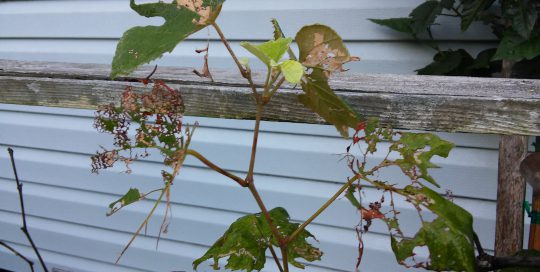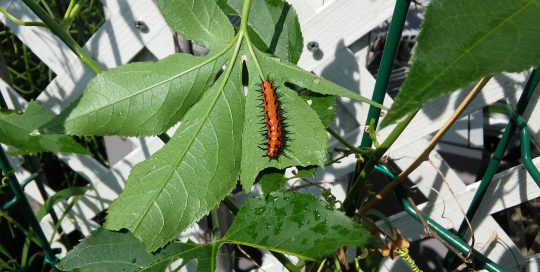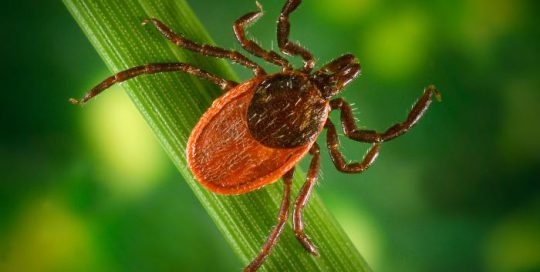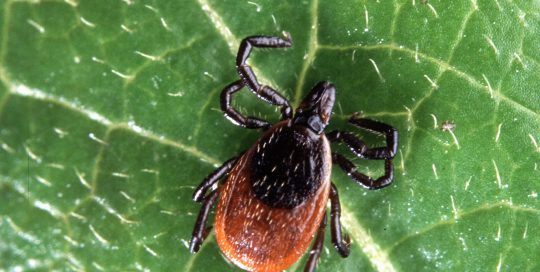Pain, Pain Go Away
I almost always wore gardening boots, long pants, long-sleeve tops, sun screen, a hat and gloves when working outdoors last spring. But when the weather suddenly warmed up in June, I was gardening in sandals. I spent a lot of time weeding, planting and watering because we were expecting about 300 people for a garden walk.
The walk was June 29, but I couldn’t spend much time with visitors. I was inside with a 102-degree fever, a bad headache and felt exhausted.
It took three visits to the emergency room, several tests and more trips to the doctor before I was diagnosed with Lyme disease. By then it was September. The ER doctors could not determine the cause of the fever or the pain that radiated across my back and ribcage. It wasn’t until I developed facial palsy on the right side of my face, and terrible stomach pain that I went back to the doctor’s office.
This time it was a different doctor. She asked me if I’d been camping (I had not). And, then it struck me when she mentioned spending time outdoors—ticks! A blood test confirmed the disease. The therapy was three weeks of antibiotics.
I thought more about how this happened. I vaguely recalled that in June I felt something very tiny crawling on top of my foot. After I brushed off what I thought was an itsy, bitsy spider, I wondered why its legs curved forward. But I didn’t think any more about it. A week or so later, I had a very small rash by my ankle and thought it was a spider bite. Looking back, it was a tick, not a spider and it had infected me! The antibiotics took care of the infection, but it was six months before all of the symptoms finally disappeared.
How to Use What to Know About Ticks and Lyme Disease to Protect Yourself
In the Chicago area, tick exposure can occur throughout the year but ticks are most active during the warmer months (April-September). Ticks survive our cold winters and become active when the weather is above freezing. Anytime I’m in the garden now (or hiking), I wear boots, long, light-colored pants tucked into my socks, a long-sleeved top and a hat.
And, we spray ourselves with tick-repellant. We treat our clothing and hiking gear with products containing 0.5% permethrin. Permethrin can be used to treat boots, clothes and camping gear and it remains protective on clothing through several washings. You can also buy permethrin-treated clothing and gear.
We’ve also purchased tick tubes, but you can make your own as well. (Google DIY tick tubes.) The tubes are filled with cotton that contains permethrin. Mice and other small rodents like chipmunks enter the tubes and take bits of the cotton back to their nests. The permethrin sticks to their fur and kills the ticks. While this can help tamp down the tick population, ticks can also come into a garden on birds, deer, raccoons, possum and squirrels so I’m always on the lookout.
Ticks enter into the house on your clothing or on a pet. Check yourself, your children and your pets when you come indoors. After spending time in your garden, woods or prairie, remove your clothes and wash and dry them.
Removing a Tick
If you do find a tick stuck to your skin, the Centers for Disease Control offers these recommendations for removing it:
- Use fine-tipped tweezers to grasp the tick as close to the skin’s surface as possible. The key is to remove the tick as soon as possible. Avoid folklore remedies such as using nail polish, petroleum jelly, or heat to make the tick detach from the skin.
- Pull upward with steady, even pressure. Don’t twist or jerk the tick; this can cause the mouth-parts to break off and remain in the skin. If this happens, remove the mouth-parts with clean tweezers. If you are unable to remove the mouth parts easily, leave them alone and let the skin heal.
- After removing the tick, thoroughly clean the bite area and your hands with rubbing alcohol, an iodine scrub, or soap and water.
Resources for What to Know About Ticks and Lyme Disease
The Centers for Disease Control and Prevention https://www.cdc.gov/lyme/index.html
Illinois Department of Public Health: http://www.idph.state.il.us/envhealth/pccommonticks.htm









